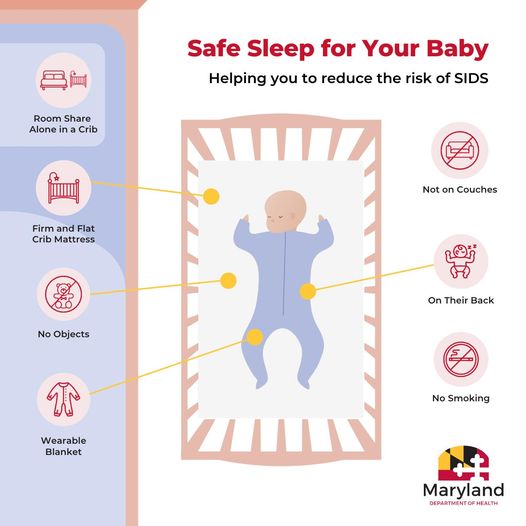 Even though we don’t know the exact cause of Sudden Infant Death Syndrome (SIDS) or Sudden Unexpected Infant Death (SUID), we know that some things can increase a baby’s risk for SIDS/SUID and other sleep-related causes of infant death.
Even though we don’t know the exact cause of Sudden Infant Death Syndrome (SIDS) or Sudden Unexpected Infant Death (SUID), we know that some things can increase a baby’s risk for SIDS/SUID and other sleep-related causes of infant death.
The good news is that there are ways to reduce the risk.
Families and caregivers can keep babies safe while sleeping by following the simple steps below.
Learn more about safe sleep here: safetosleep.nichd.nih.gov/reduce-risk/reduce
Ways to Reduce Baby’s Risk
Parents, caregivers, healthcare providers, and others have made great progress in reducing sleep-related deaths in the United States. By placing babies on their backs to sleep for all sleep times, creating a safe sleep environment for baby, and following other evidence-based recommendations from the American Academy of Pediatrics (AAP) Task Force on Sudden Infant Death Syndrome (SIDS), everyone who cares for baby can help reduce baby’s risk of SIDS and other sleep-related infant death, such as suffocation.
The actions listed here and in Safe to Sleep® materials and publications are based on the AAP Task Force recommendations. You can read the latest Policy Statement on Safe Infant Sleep from the AAP Task Force on SIDS.external link
It’s important for all caregivers—parents, grandparents, aunts, uncles, babysitters, child care providers, and anyone who might care for baby—to learn about safe infant sleep to help reduce baby’s risk.


